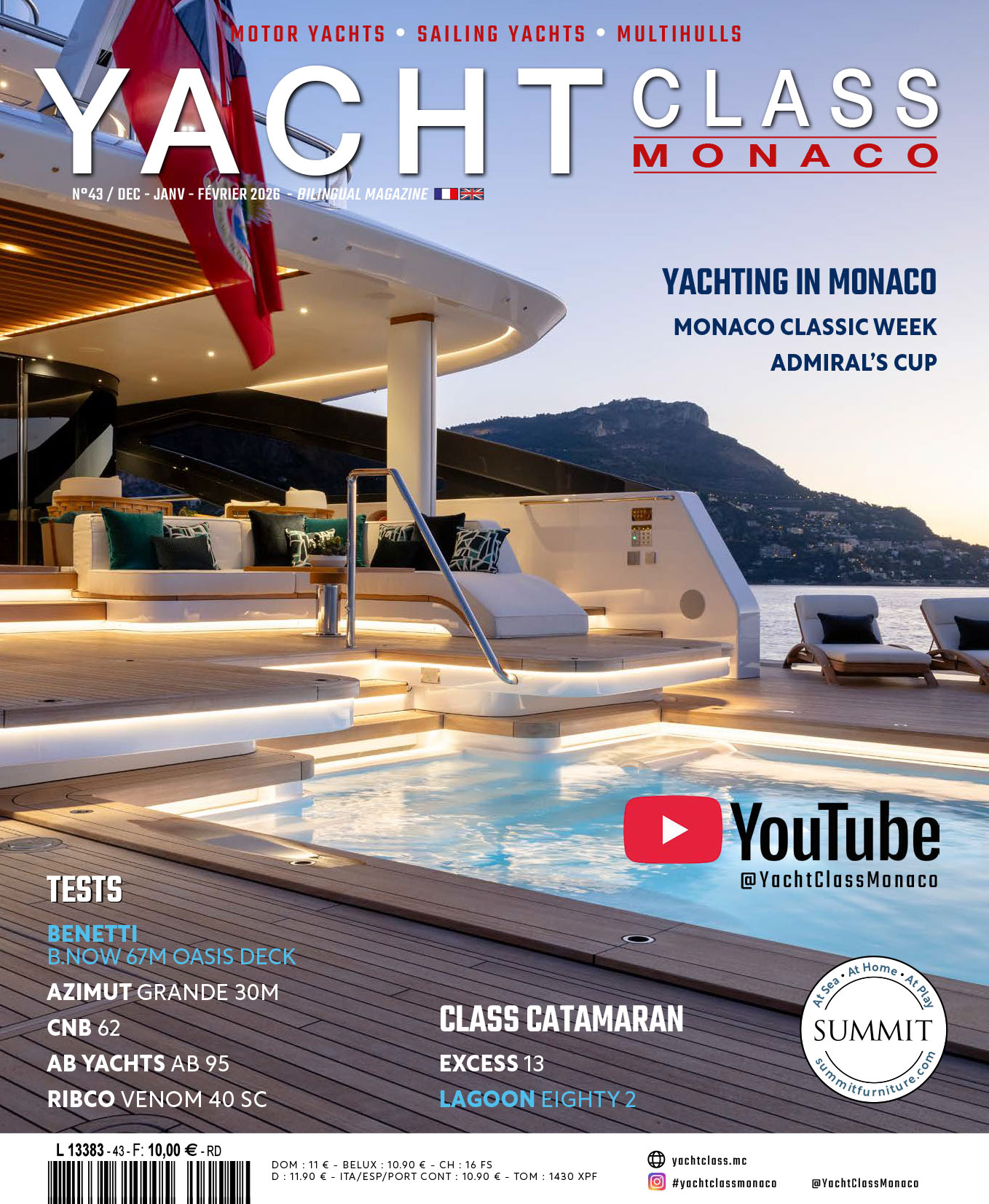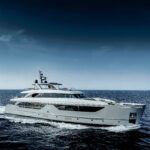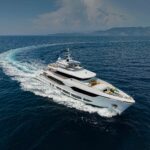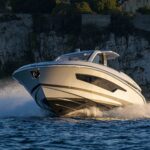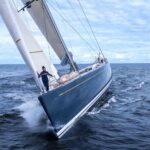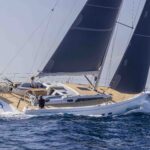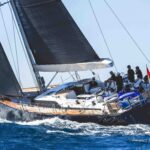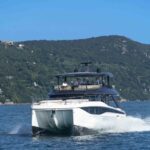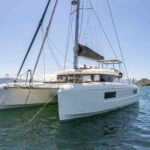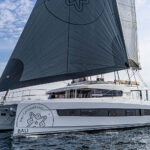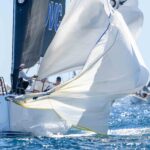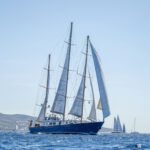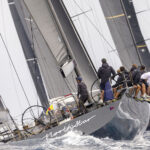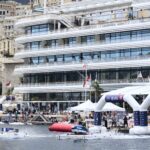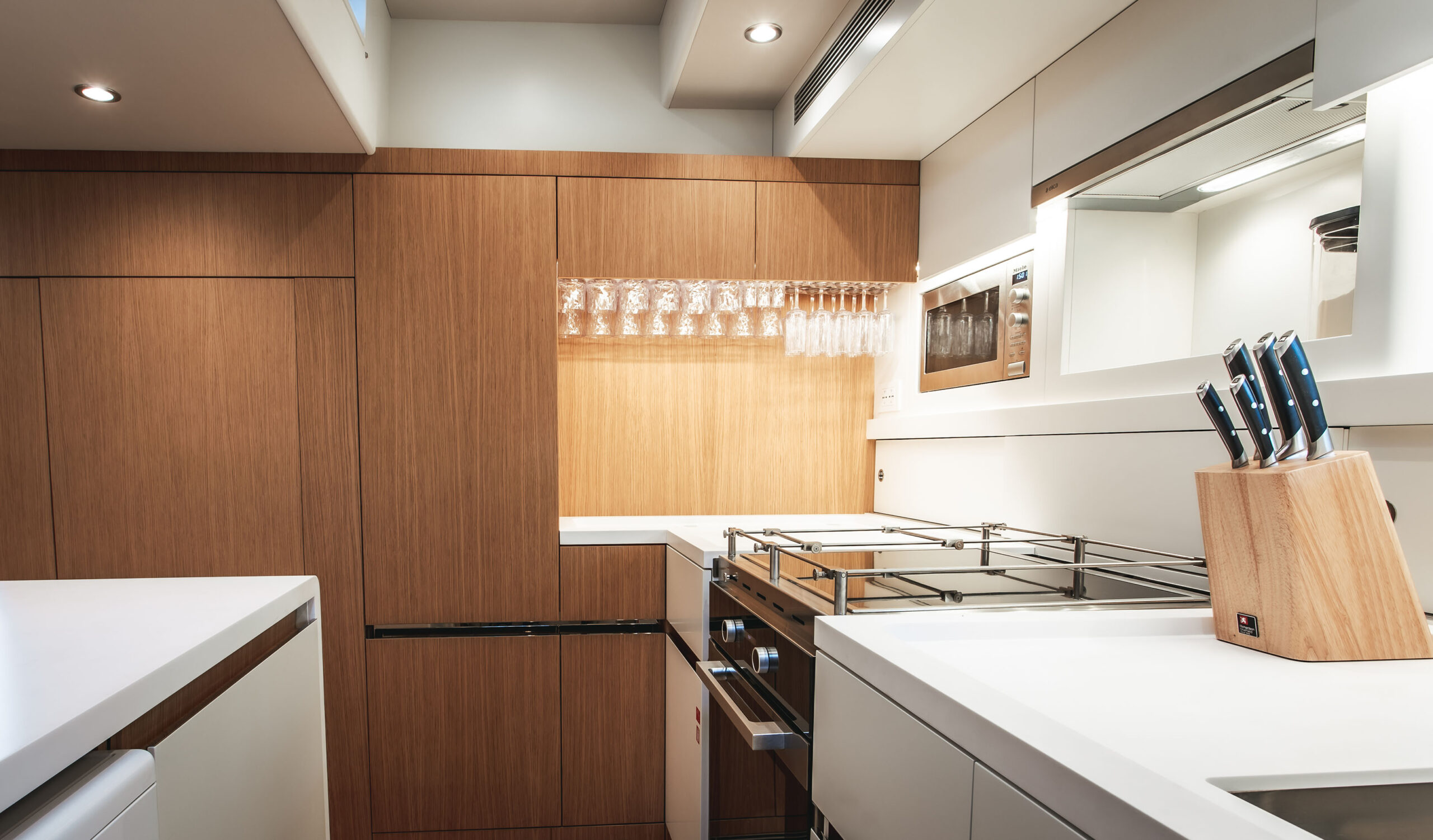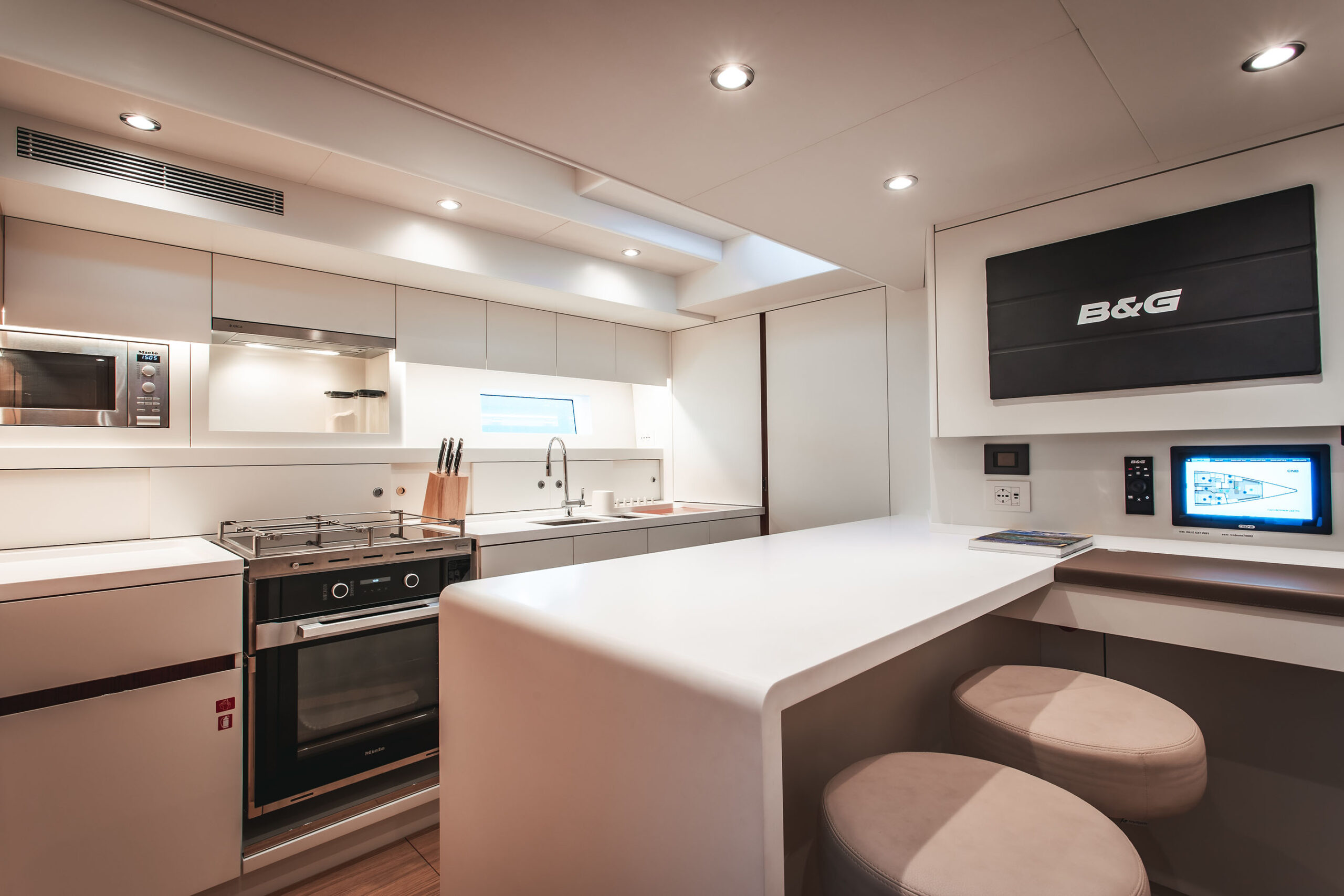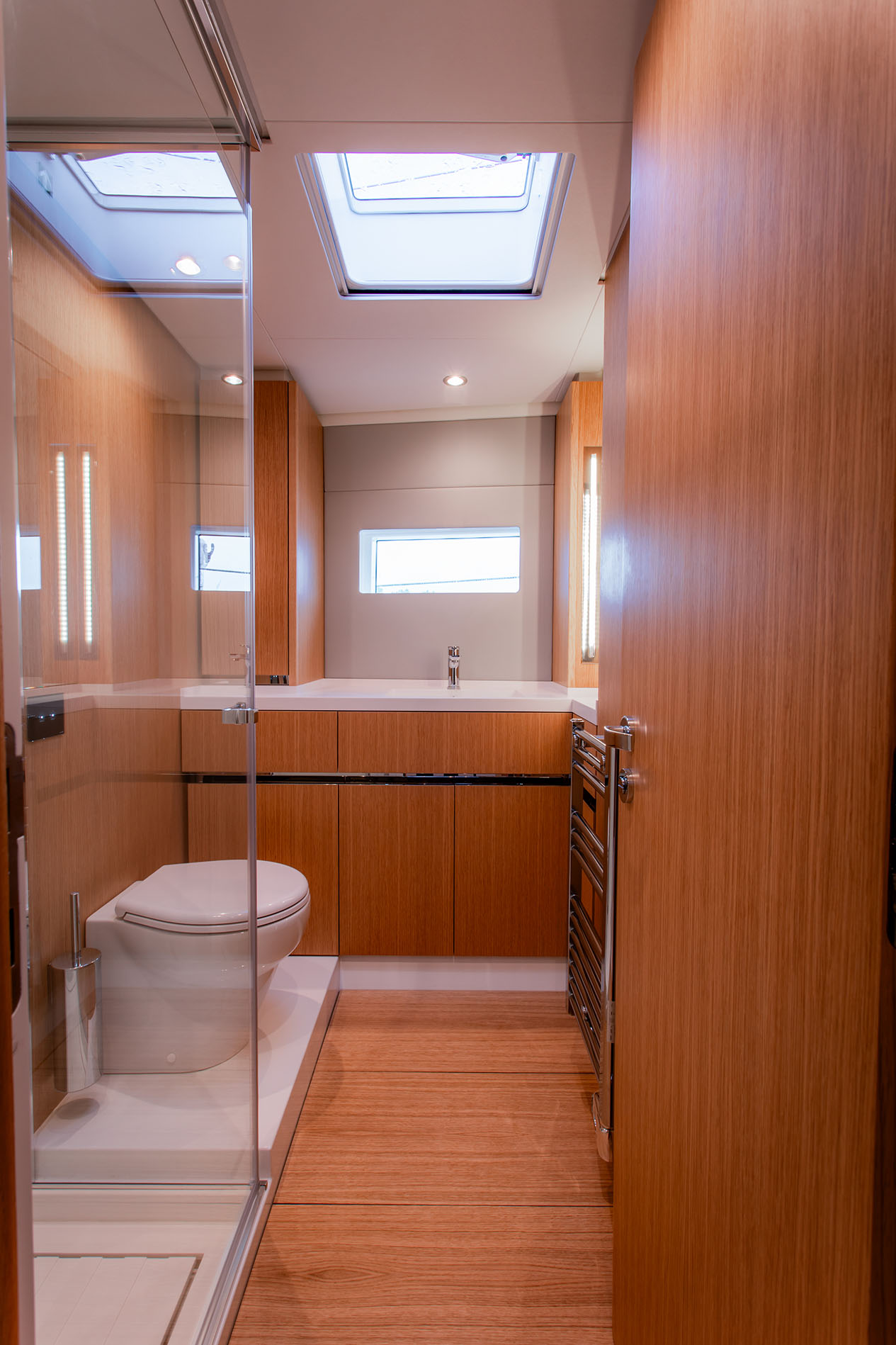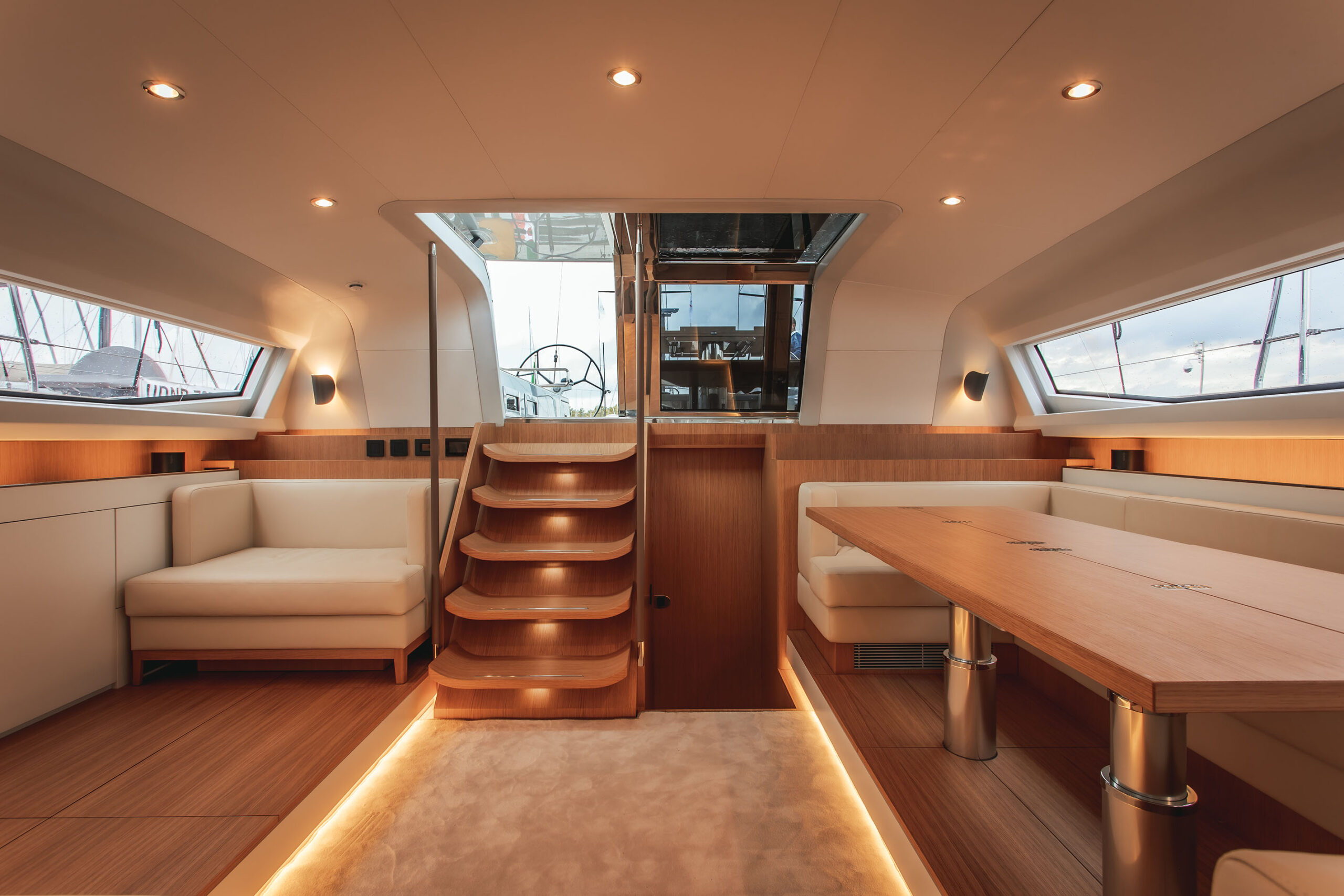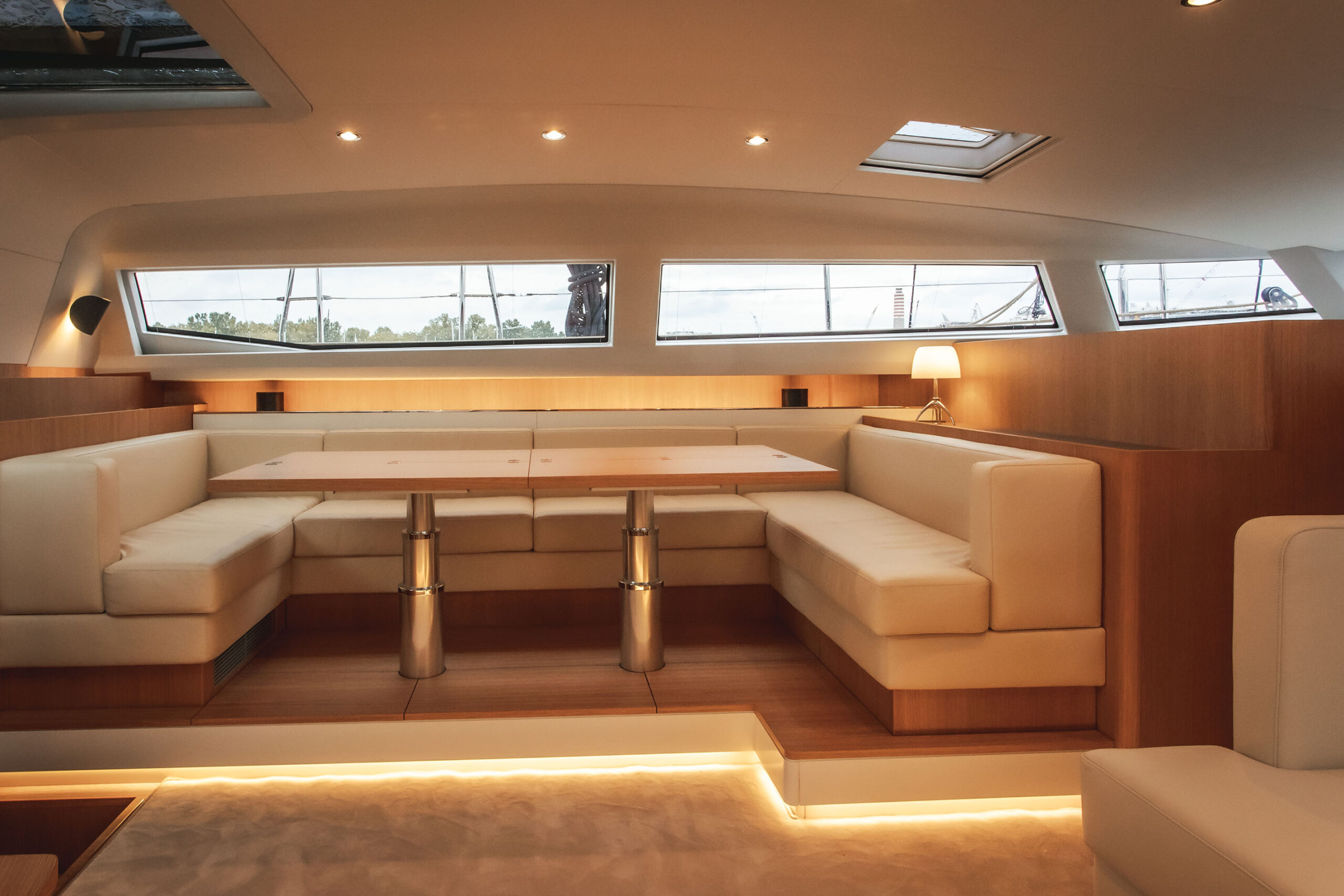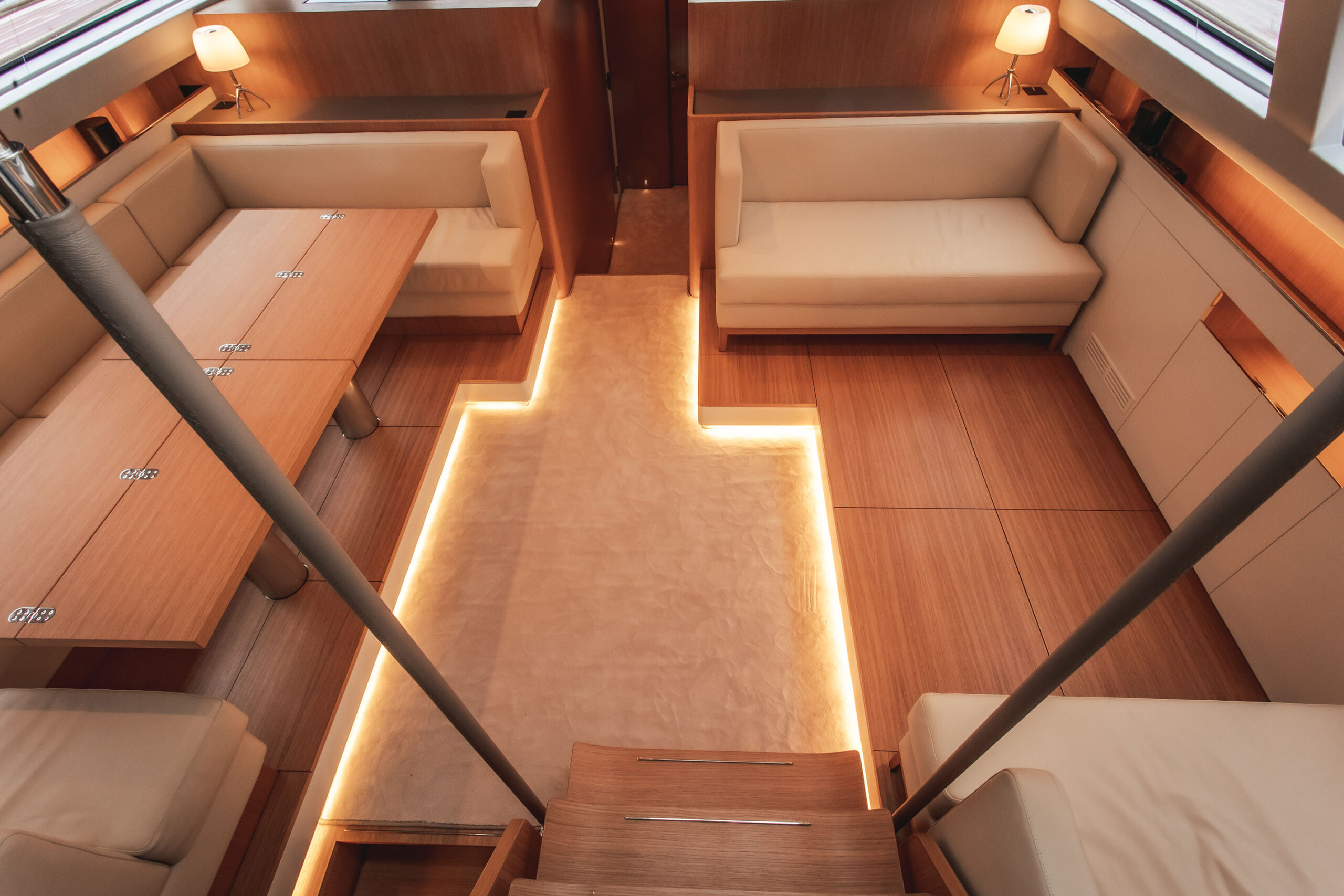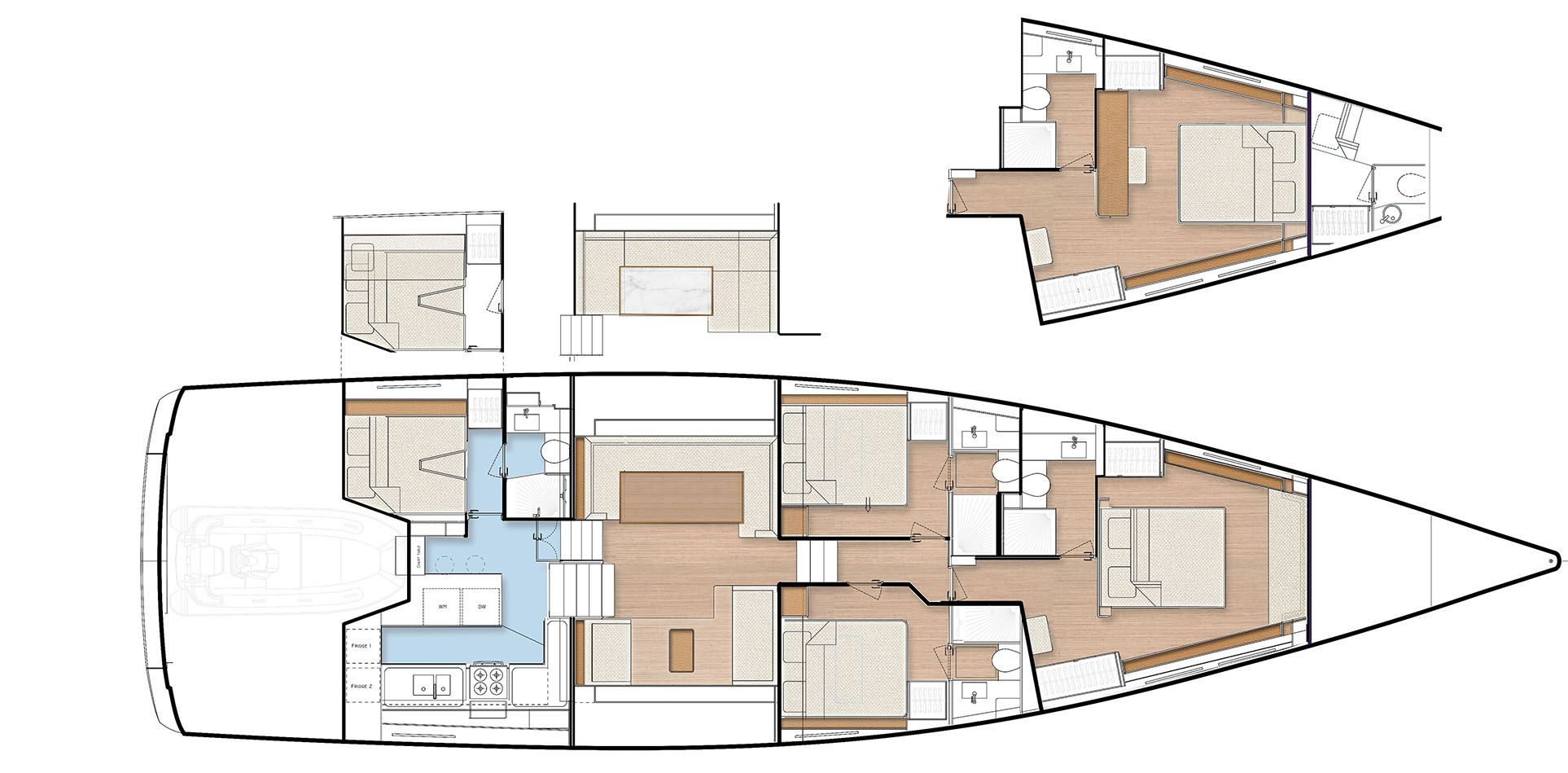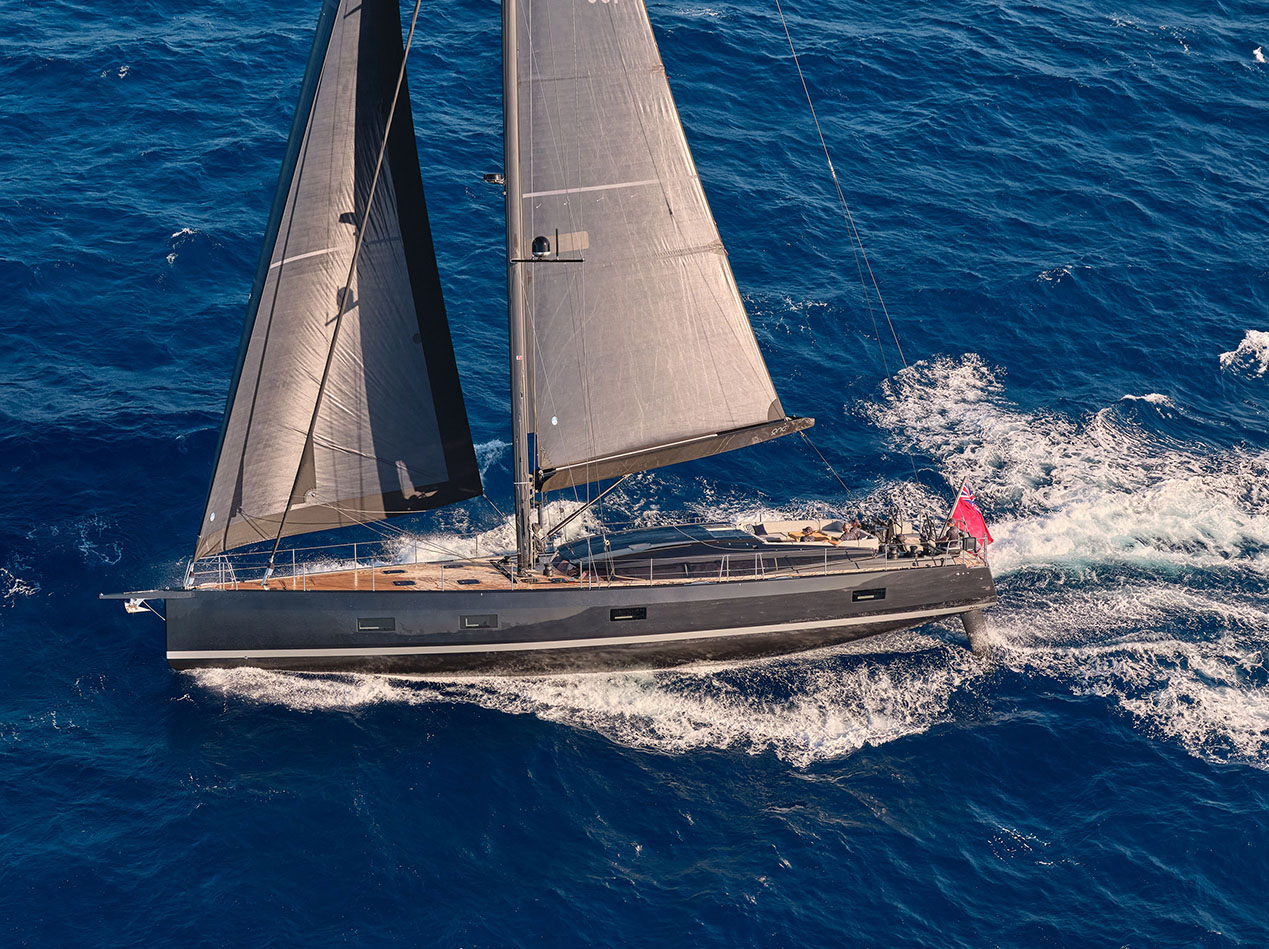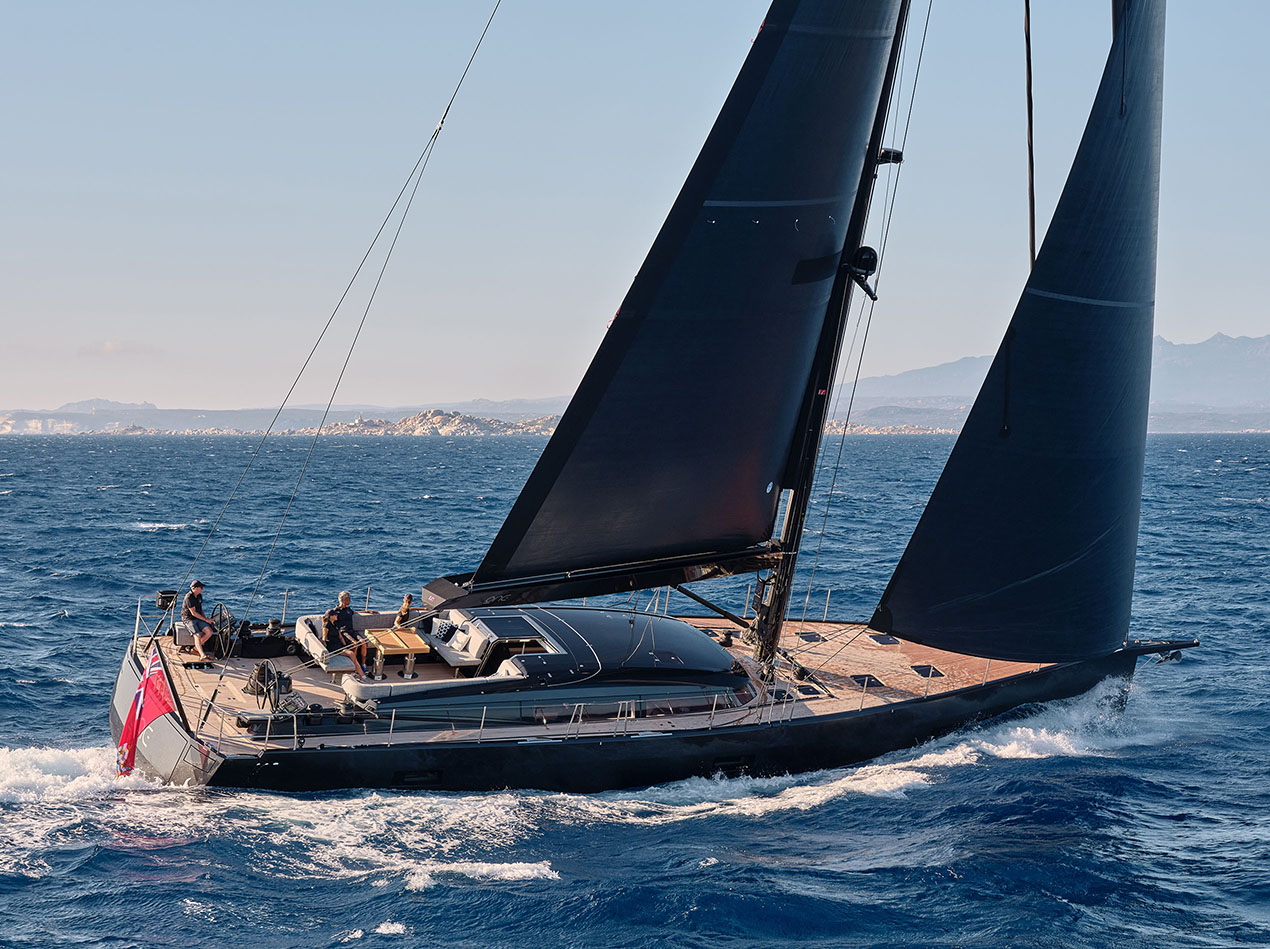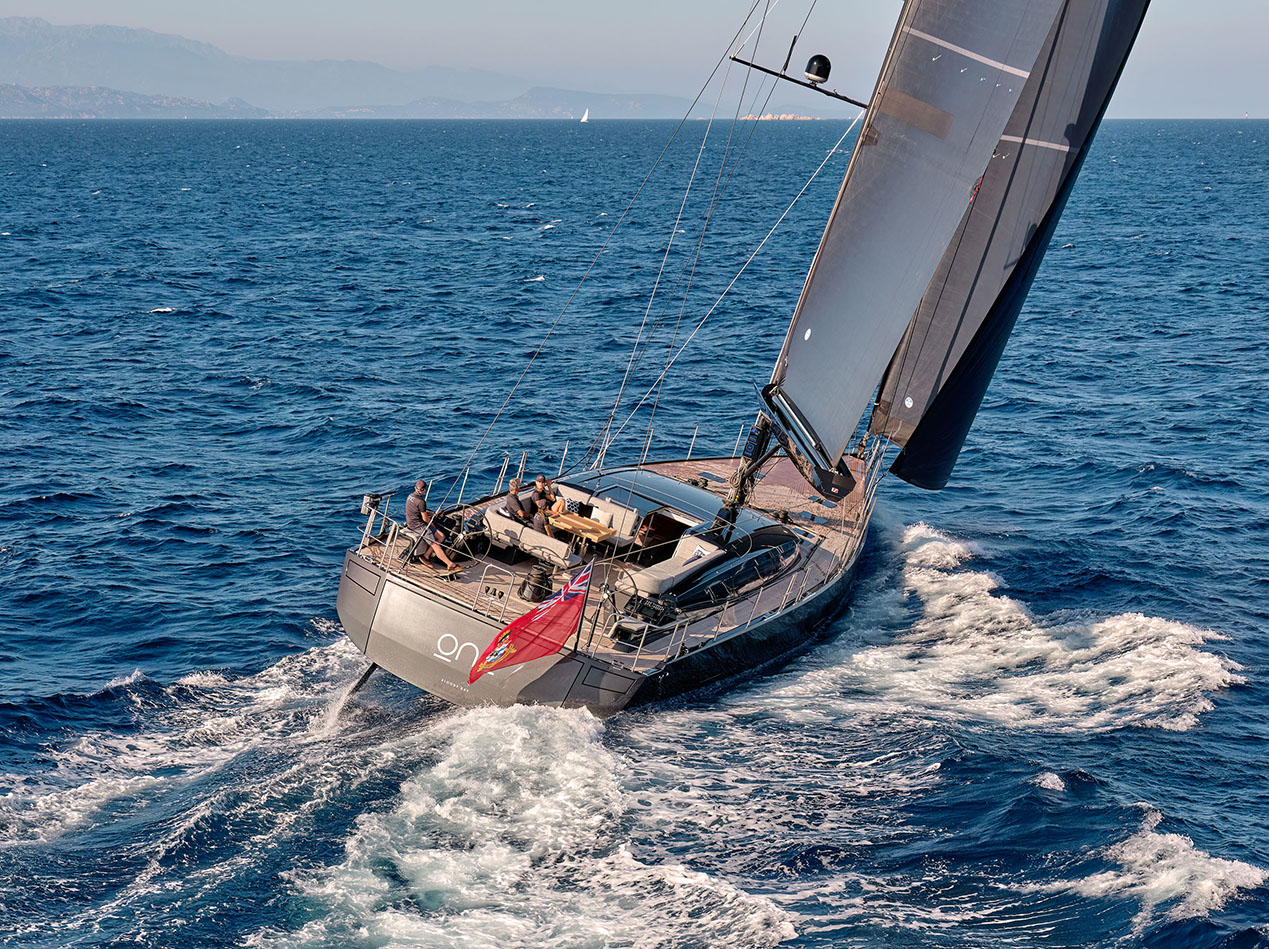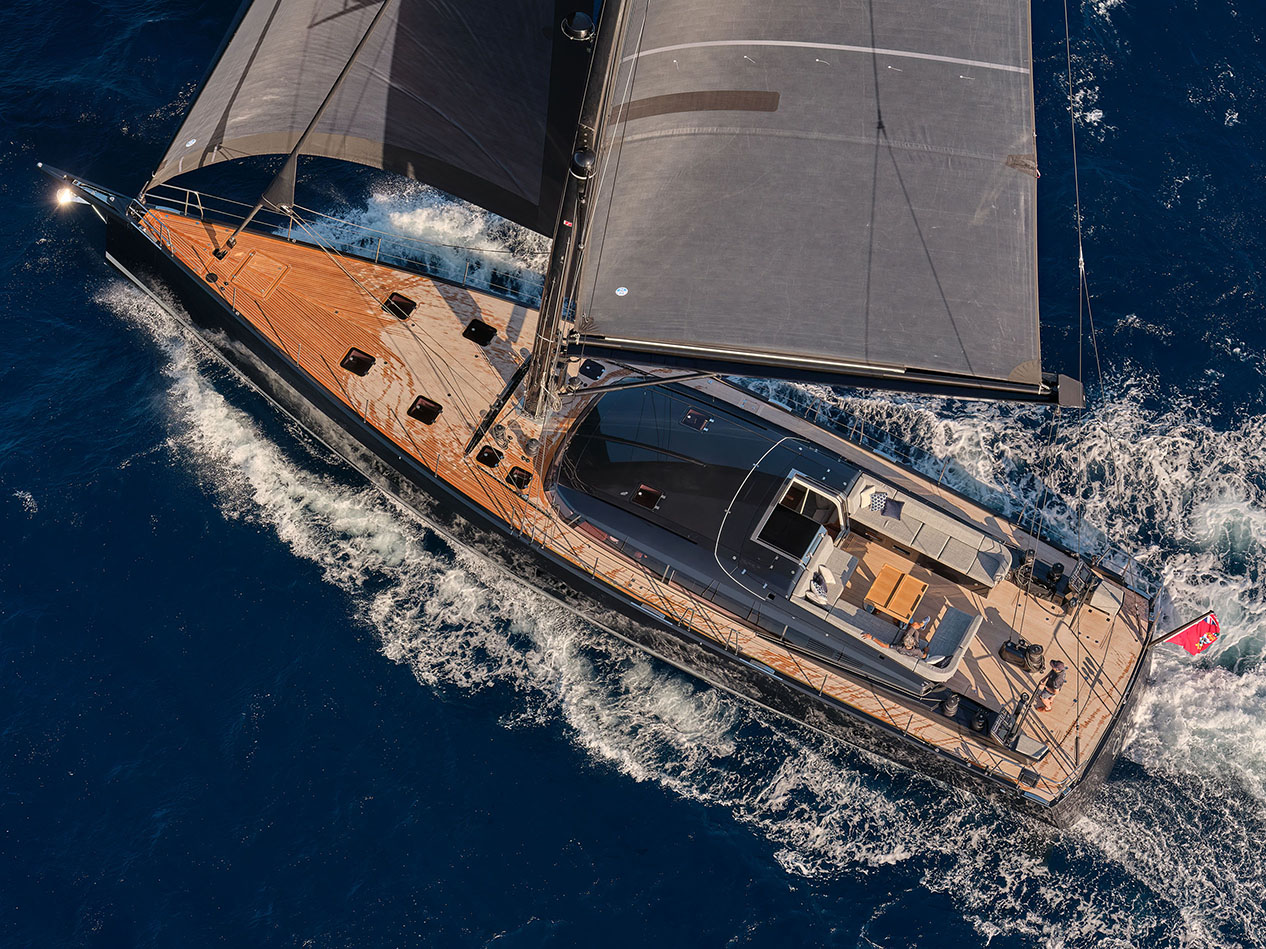Presentation
Yacht Class n°37 (june-july-agust 2024)
CNB yachts – Solaris Group
The CNB 78, the brand‘s first model since coming under the Solaris banner, was eagerly awaited, and to say the least, she does not disappoint. Equipped with the hallmarks of her name, she demonstrates the strong commitment of her new shipyard, which has put all its know-how and meticulous finishing touches into creating a yacht that is elegant, comfortable and easy to sail.
Written by : Christophe Varène – Photos : DR
Some sports are familiar with this phenomenon: when the mercato gets hot, transfers cause a stir in the media. So when the CNB brand joined forces with Solaris Yachts, comments were rife: how could the original DNA be preserved, what benefits would the new structure bring, in short, would the graft be successful? The presentation of the first CNB 78 at the last Cannes boat show provided some answers, most of them positive, but a trial with the second model in the series in the waters off Monfalcone, near Trieste, where the Solaris shipyard is located, confirmed this initial view. A sudden and violent north-north-easterly wind in the Adriatic, caused by a blow from Bora, cancelled the first outing (gusting to 35-40 knots and torrential rain), but gave us the opportunity to discover the shipyard and its fine production facilities: a quality showcase for the design and construction of CNBs, with an upmarket range that stood out from the first glance. In particular, you can see mock-ups, 1:1 scale models of the layouts of the future units, the CNB 62 and 88. It is an immersive way to get a feel for the volumes and movements of the (future) boats, as close as possible to reality.
A refined slatted deck
The following day proved to be a good day out at sea, but only after taking the time to discover every nook and cranny of this yacht, which, thanks to the CNB DNA, aspires to long cruises. While the construction is now 100% Italian, the architecture and interior design retain their French roots. Philippe Briand has designed a hull which, although it has the same width as the CNB 76, retains the main beam over the entire aft half, a guarantee of stability and interior volume. The garage can accommodate a 3.95 m long Williams-type tender, and the adjoining space can house a diving station. An added bonus from the Italians is that the tender slides into the water on rollers, which are then retracted to leave a smooth bathing platform. As we continue to survey the deck, whose slats with no visible transverse joints seem to run continuously along its entire length, we also appreciate the absence of steps, replaced by a gentle slope running from stern to bow, and the quality of the fittings chosen: deck hatches, hydraulic furlers, carbon bowsprit, everything is designed to be easy to use and to stand the test of time. Moving around is made safer by the slightly raised deckhouse profile. Towards the bow, the large sail locker can accommodate a crew cabin.
A profusion of light inside
Before going below, a glance at the deck saloon reveals its ergonomic design, where safety (with handrails on the backrests), conviviality (a dining area with a large table that can be lowered to form a sunbathing area) and circulation (free access to the companionway off the starboard side) are the watchwords. The electric companionway door slides to the left and the curved steps with a vertical handrail provide easy access to the saloon, where light and visibility are paramount: the deckhouse windows, the hull portholes and the window that doubles as the aft door are all sources of clarity. On the port side, the dining area features a U-shaped bench around two fold-down tables, while on the starboard side, a small relaxation area features a table nestled in a cupboard that also houses the coffee and ice machines. The interior, designed by Piaton Yacht Design, is soothing and uncluttered, with simple, natural materials. Going up the forward passageway, you pass two identical guest cabins, each with its own bathroom, to arrive at the owner’s suite: the sleeping area with its large double bed is separated from the shower room and the study by a wooden screen that maintains the effect of volume. Returning aft, we find the crew area with a double cabin and en-suite bathroom, a bright and functional galley, and a chart table from which we can also manage all the technical aspects of the boat.
Smooth and responsive at the helm
The time has come to cast off. With four people on board, and the weather finally (too?) clement, the CNB 78 is easy to manoeuvre. At the engine, the helmsman can choose his or her helm station, with the two consoles, with their light, unobtrusive design, featuring the same instrumentation on each side. We are surprised by the silence of the engine, a 175hp Volvo Penta D4 diesel: inaudible on the outside, it is very discreet inside. With a little push at 2,200/2,400 rpm, the speed is close to 10 knots. A large array of buttons controls most of the settings: halyards, vang, backstay, furling systems, lights, garage, etc. With a reduced crew, nothing seems complicated on board, and everything is within easy reach in the uncluttered aft area, which is well separated from the passenger relaxation area. This unit has a furling mast, but there are of course configurations with a furling boom or classic rig. Mainsail and genoa hoisted, in a light breeze of 7 to 8 knots, the CNB 78 glides along at around 7 knots and is gentle and docile at the helm. Very responsive, the tacks follow on from each other with ease, but alas, with no downwind sail on board, performance at this speed is not representative. Well-balanced and sensitive to the slightest reef, this CNB 78 is nonetheless capable of racking up the miles on an ocean crossing, for example. To come back to the questions we asked at the start of this test, we can conclude that CNB, while retaining its own character, has found within the Solaris team an environment favourable to its development, by broadening the range offered by the transalpine manufacturer: a win-win transfer in short.
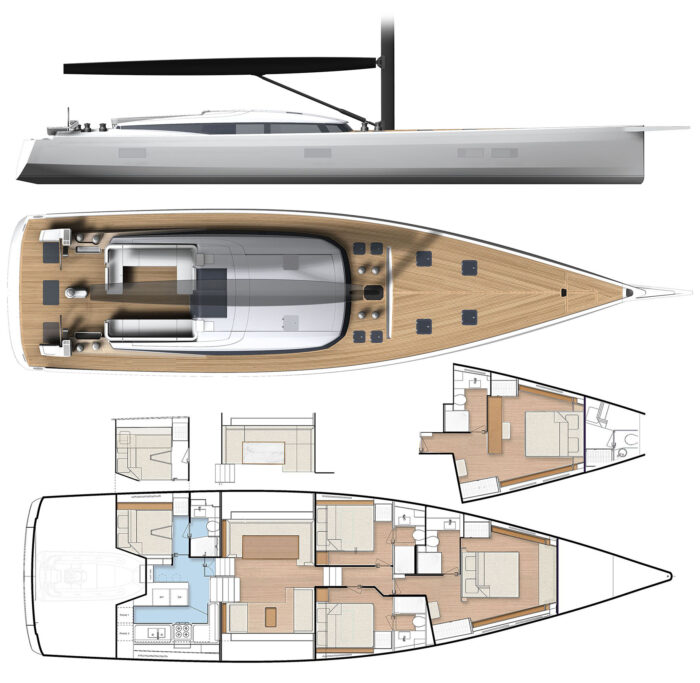
Technical sheet
